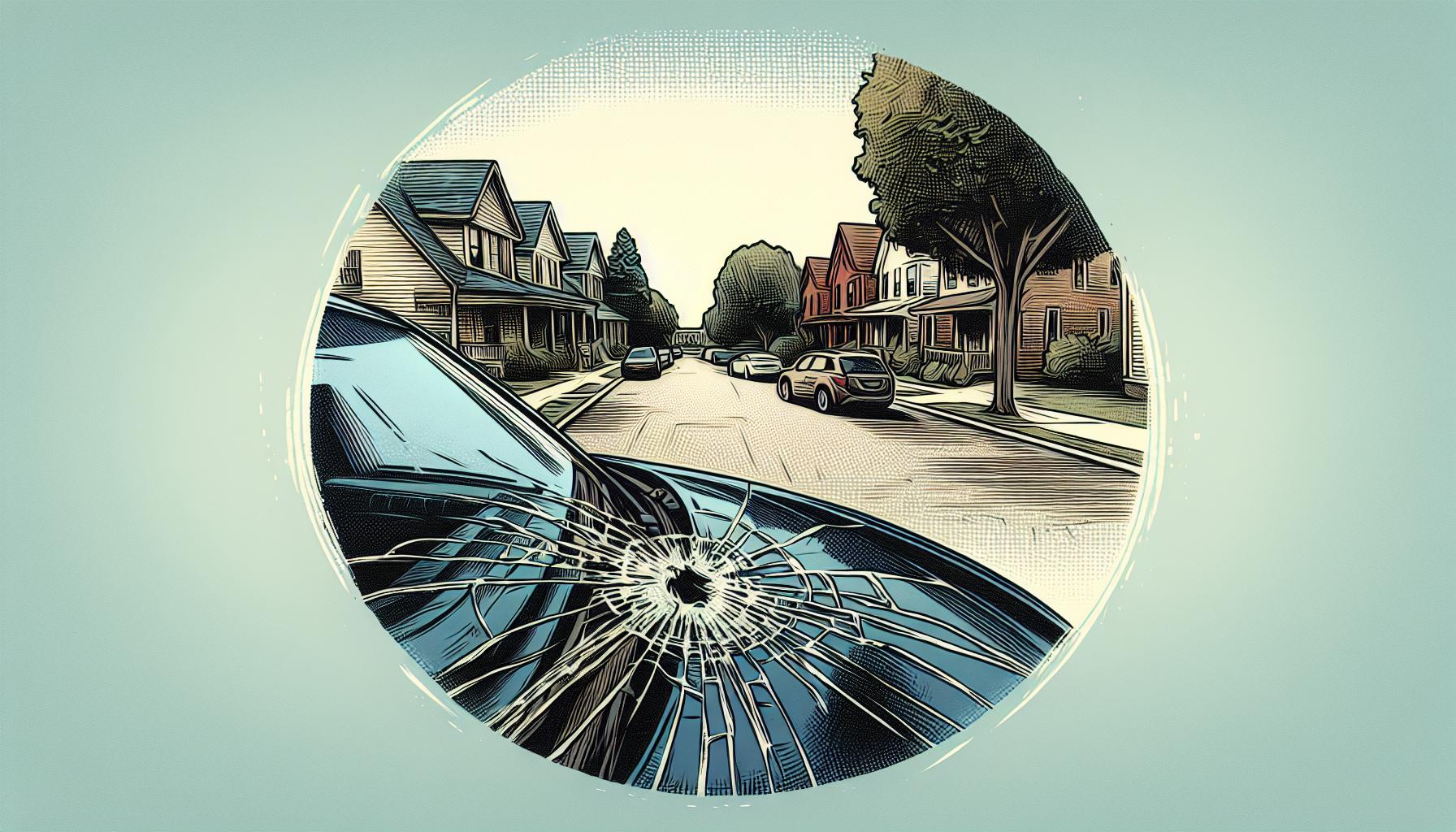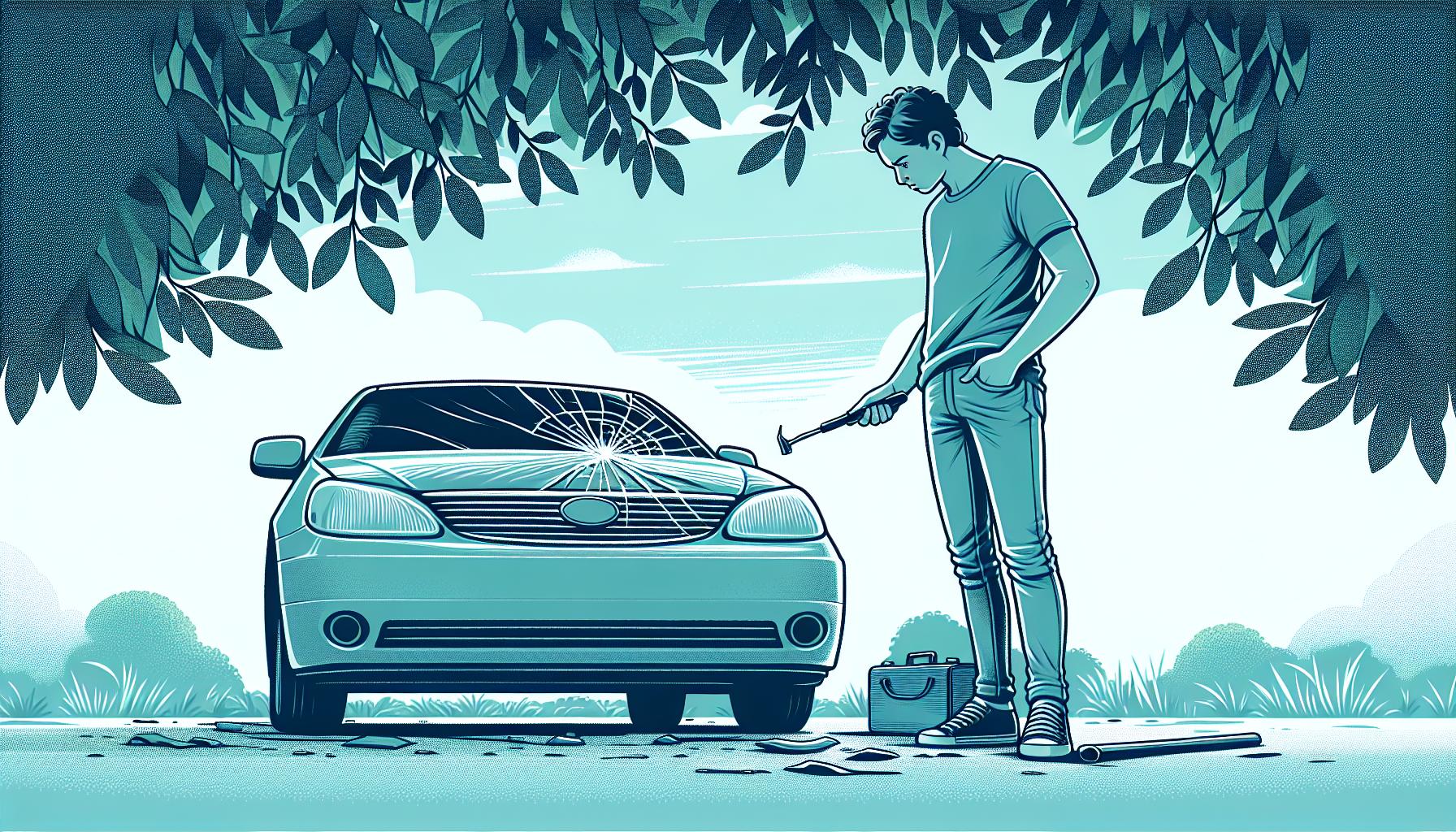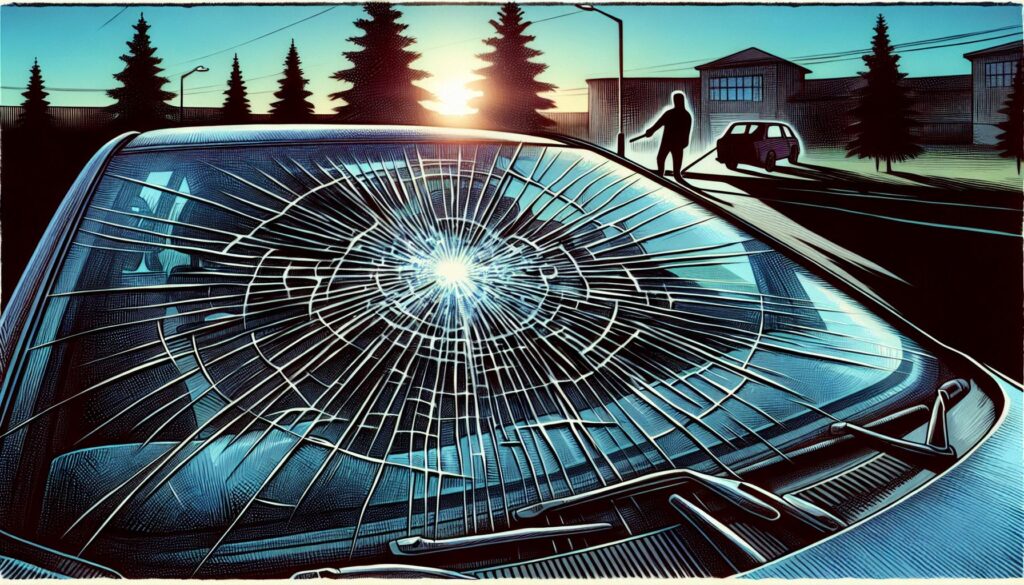A small crack in your windshield might not seem like a big deal at first, but it can quickly turn into a serious problem. I’ve learned that cracks don’t just stay put—they spread, often faster than you’d expect. Factors like temperature changes, road vibrations, and even the tiniest impact can make that crack grow before you know it.
Understanding how fast a windshield crack spreads is crucial for your safety and your wallet. Ignoring it can lead to costly repairs or even a full windshield replacement. In some cases, a crack can expand overnight, leaving you wondering how it got so much worse. Knowing what influences its growth can help you act before it’s too late.
Factors That Influence Windshield Crack Spread
A windshield crack’s growth rate depends on various external and internal factors. Recognizing these factors helps avoid costly spread escalation and ensures timely repairs.
Type Of Crack
The shape and location of a crack significantly affect its behavior. A long, linear crack spreads faster than a chip because of its straight path. Starburst cracks, which radiate outward, grow quickly due to multiple weak points. Edge cracks expand more rapidly than center cracks since the windshield edges have structural vulnerabilities.
Temperature Changes
Fluctuating temperatures create stress that causes cracks to spread. Extreme heat during summer can expand the glass, while freezing temperatures contract it. Rapid temperature shifts, such as using hot water on a frosted windshield, increase the likelihood of crack propagation.
Driving Conditions
Driving speed and terrain impact a crack’s growth. High speeds expose windshields to air pressure that worsens existing damage. Uneven or rocky roads subject the glass to consistent stress, accelerating crack development.
Vibrations And Impacts
Frequent vibrations weaken the structural integrity around a crack. Impacts from debris, like small stones hitting the windshield, can instantly lengthen existing cracks. Even low-impact vibrations from engine function or poor road conditions worsen crack size over time.
Typical Timeframe For Crack Expansion

Windshield cracks can spread at varying speeds based on environmental factors and the type of damage. Understanding how quickly cracks expand helps prioritize repairs and avoid escalating costs.
Small Chips Vs. Large Cracks
Small chips, such as those under 1 inch, typically expand more slowly than large cracks. Chips often grow when external forces like vibrations or temperature fluctuations increase stress on the glass. Large cracks, especially those exceeding 6 inches, spread faster due to compromised structural integrity and the stress they impose on the surrounding glass. For example, a linear crack near an edge expands more quickly than a similar crack in the middle due to weaker support.
Seasonal Variations In Crack Growth
Crack expansion rates accelerate during extreme seasonal changes. In winter, cold temperatures contract the glass, worsening existing cracks when paired with the stress of warming heaters. Conversely, in summer, heat causes the glass to expand, making cracks more prone to spreading when cool air conditioning is used. For instance, a windshield exposed to freezing overnight temperatures followed by direct sunlight the next morning is at higher risk of rapid crack growth.
Immediate Vs. Delayed Spread
Some cracks expand immediately, while others remain stable for weeks under controlled conditions. Linear cracks often spread faster when subjected to vibrations from rough roads or impacts from flying debris. Starburst cracks, however, might remain static initially but grow unexpectedly with sudden external pressure. Delayed spread is less likely when the vehicle is frequently exposed to fluctuating weather or harsh terrain.
Risks Of Ignoring Windshield Cracks

Neglecting a windshield crack can lead to multiple risks, ranging from safety issues to financial and legal repercussions. Addressing these problems early minimizes the impact.
Safety Hazards
Cracks compromise the windshield’s structural integrity, reducing its ability to absorb impact. In an accident, a damaged windshield might shatter, increasing the likelihood of injuries. Large cracks can obstruct vision, impairing reaction times and increasing accident risks, especially under low visibility conditions like heavy rain or nighttime driving.
Increased Repair Costs
Small cracks are more affordable to fix, often costing $60-$100, depending on the service. However, ignoring them can lead to crack expansion, necessitating full replacements, which range between $200-$400 for standard vehicles or exceed $1,000 for luxury models. Prolonged delays may also result in collateral damage to vehicle sensors or ADAS systems, further raising repair expenses.
Legal Implications
Many states consider a cracked windshield a violation if it obstructs the driver’s view, resulting in fines ranging from $50-$150 based on the jurisdiction. In severe cases, the crack may render the vehicle uninsurable or unfit for operation. These consequences can lead to additional legal complications, such as increased liability risks in accidents.
Prevention And Maintenance Tips

Taking proactive steps helps slow the spread of windshield cracks and prevents expensive repairs or replacements. Maintenance practices reduce risks associated with cracked windshields.
Prompt Repairs
Addressing cracks immediately prevents further damage. Delaying repairs makes cracks more likely to spread due to vibration, moisture, and temperature changes. For small chips or cracks, I use professional repair kits or visit auto glass technicians to restore structural integrity.
Parking Techniques
Parking in shaded or covered areas minimizes temperature fluctuations that worsen cracks. I avoid parking under direct sunlight during hot summer days and refrain from parking in freezing open spaces during winter. Sudden climate shifts cause rapid expansion and contraction of the glass.
Use Of Protective Films
Applying protective films strengthens the windshield and mitigates crack growth. These films create a barrier against debris and external pressure. I particularly recommend these for those driving frequently on gravel or uneven roads, where debris impact risks are higher.
Conclusion
A small windshield crack might seem harmless, but it can quickly escalate into a costly and dangerous problem if left unchecked. Understanding the factors that influence crack growth and taking proactive measures can save you time, money, and potential safety risks.
By addressing cracks promptly and following preventive tips, you can protect your windshield’s integrity and avoid unnecessary expenses. Don’t wait for a minor issue to turn into a major hassle—act quickly to keep your vehicle safe and road-ready.
Frequently Asked Questions
Can a small windshield crack get worse over time?
Yes, a small windshield crack can worsen quickly due to road vibrations, temperature changes, and minor impacts. If left unrepaired, the crack may spread, compromising the windshield’s structural integrity and making it more expensive to fix later.
How fast can a windshield crack spread?
The speed at which a crack spreads depends on factors like its size, shape, and location, as well as environmental conditions like temperature fluctuations. Some cracks expand within hours, while others may remain stable for weeks before unexpectedly growing.
What are the common causes of windshield cracks spreading?
Windshield cracks spread due to structural vulnerabilities, road vibrations, impacts from debris, and temperature changes. Extreme conditions, such as cold nights followed by sunny days, can stress the glass, causing cracks to grow faster.
What risks are associated with driving with a cracked windshield?
A cracked windshield reduces visibility, increases the risk of accidents, and compromises the glass’s ability to absorb impact during a collision. In some states, it’s also illegal to drive with a cracked windshield if it obstructs your view.
Are small windshield cracks expensive to repair?
Repairing small windshield cracks is relatively inexpensive compared to the cost of replacing the entire windshield. Acting quickly can save you money, as smaller cracks are easier and cheaper to fix.
Can temperature changes make windshield cracks worse?
Yes, temperature fluctuations create stress in the glass, especially when transitioning from cold to hot conditions. This can cause existing cracks to expand more rapidly.
What is the best way to prevent a windshield crack from spreading?
To prevent a crack from spreading, repair it promptly, avoid extreme temperature changes, and park in shaded or covered areas. You can also apply protective windshield films to strengthen the glass.
Do crack shapes affect their growth?
Yes, the shape of a crack influences its growth. Linear cracks spread more slowly, while starburst or edge cracks are structurally weaker and expand faster under stress.
When should you replace instead of repair a windshield?
If a crack exceeds 6 inches or obstructs your driver’s line of sight, replacing the windshield is usually recommended. Repairs are more suitable for minor chips or cracks under 1 inch.
Is it legal to drive with a cracked windshield?
In many states, driving with a cracked windshield may be illegal if it obstructs your vision. This could lead to fines or other legal consequences, so it’s best to repair the crack as soon as possible.
